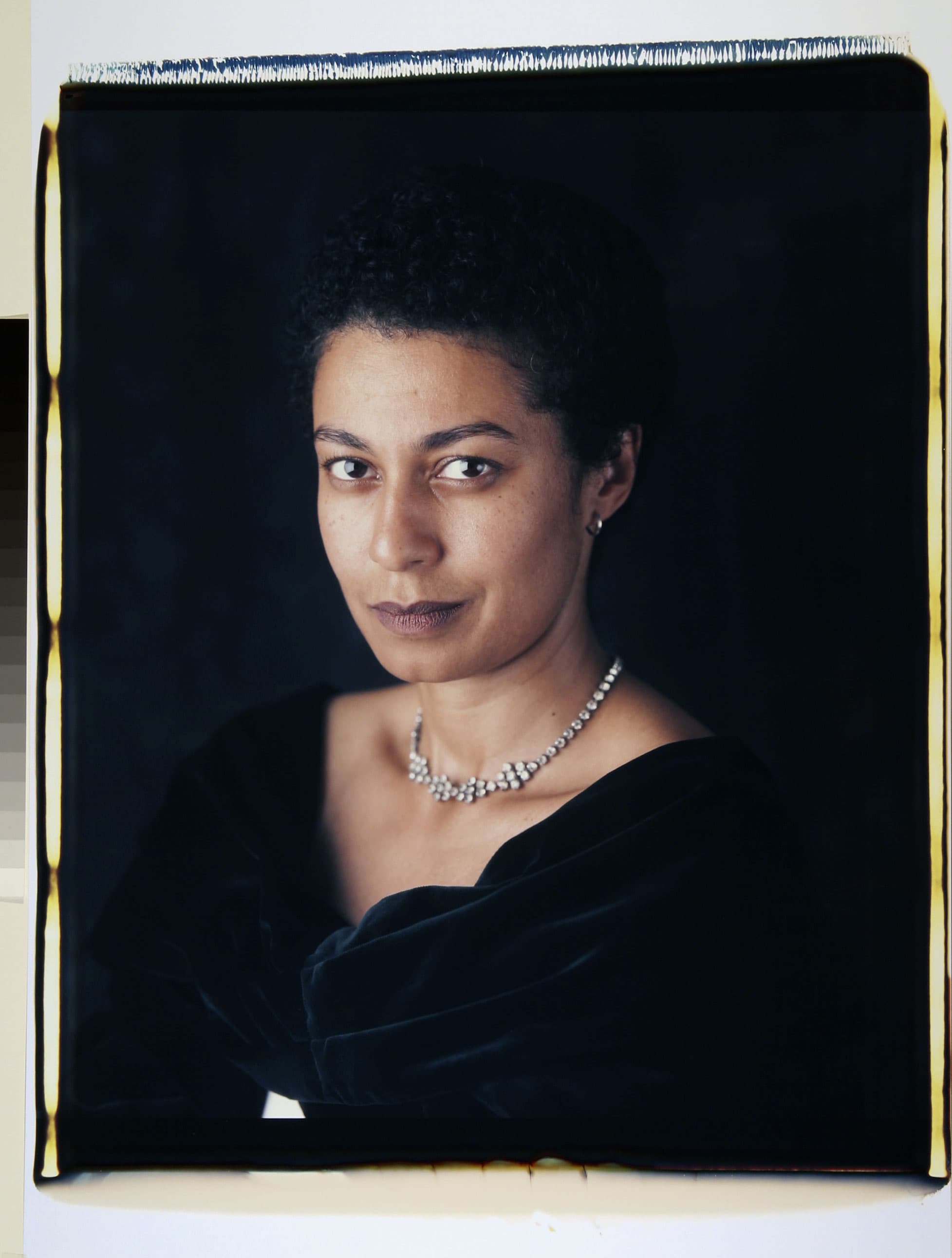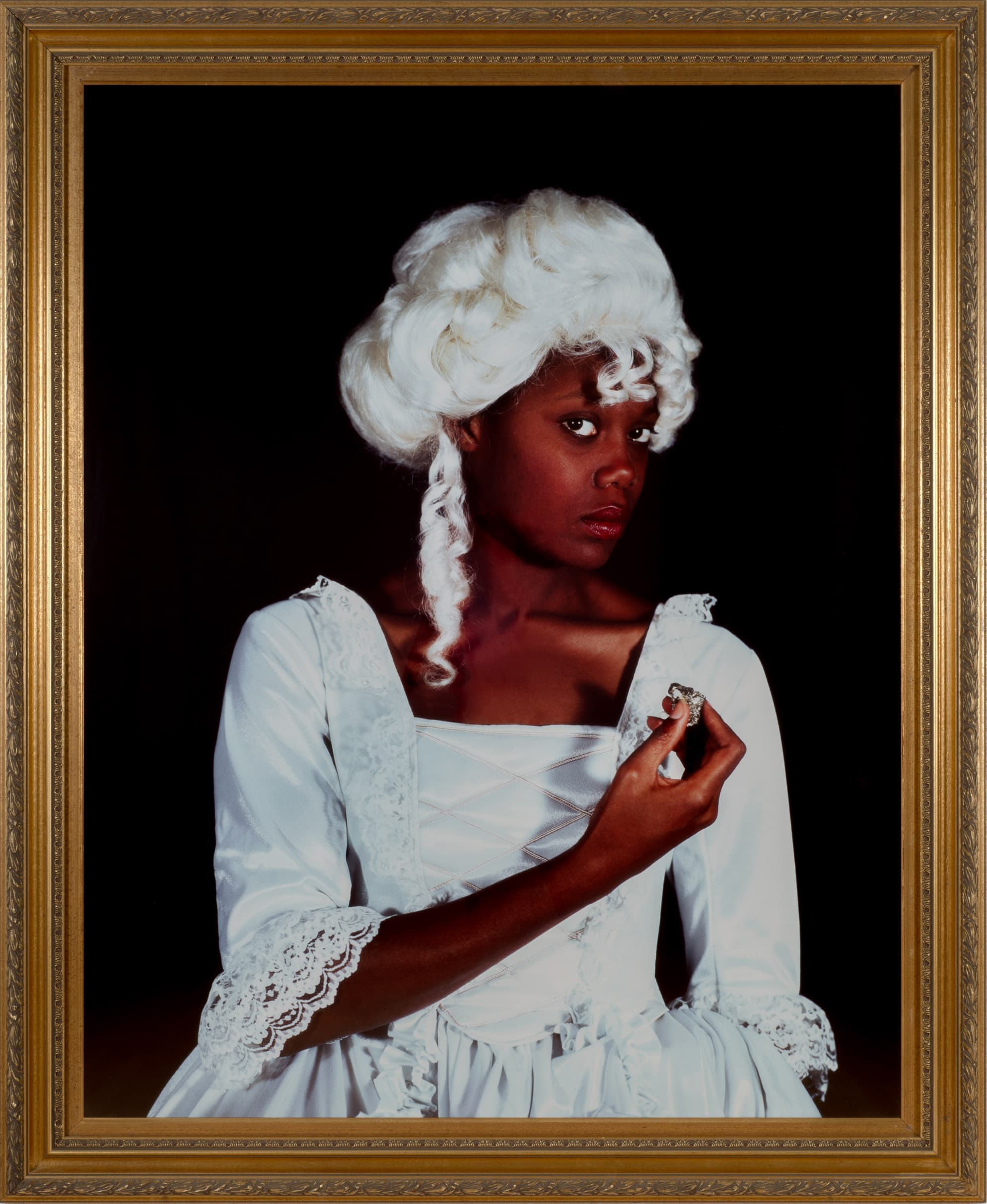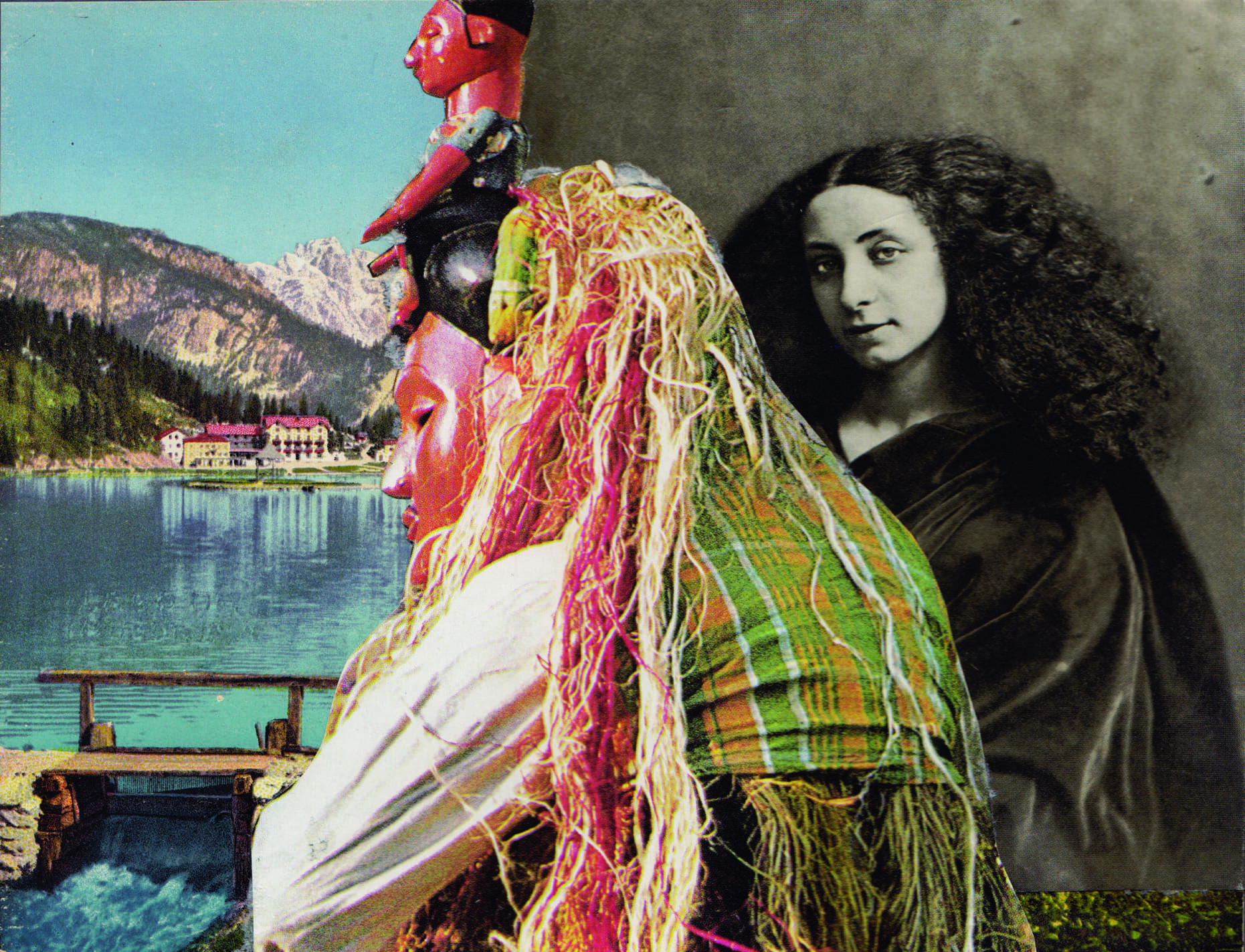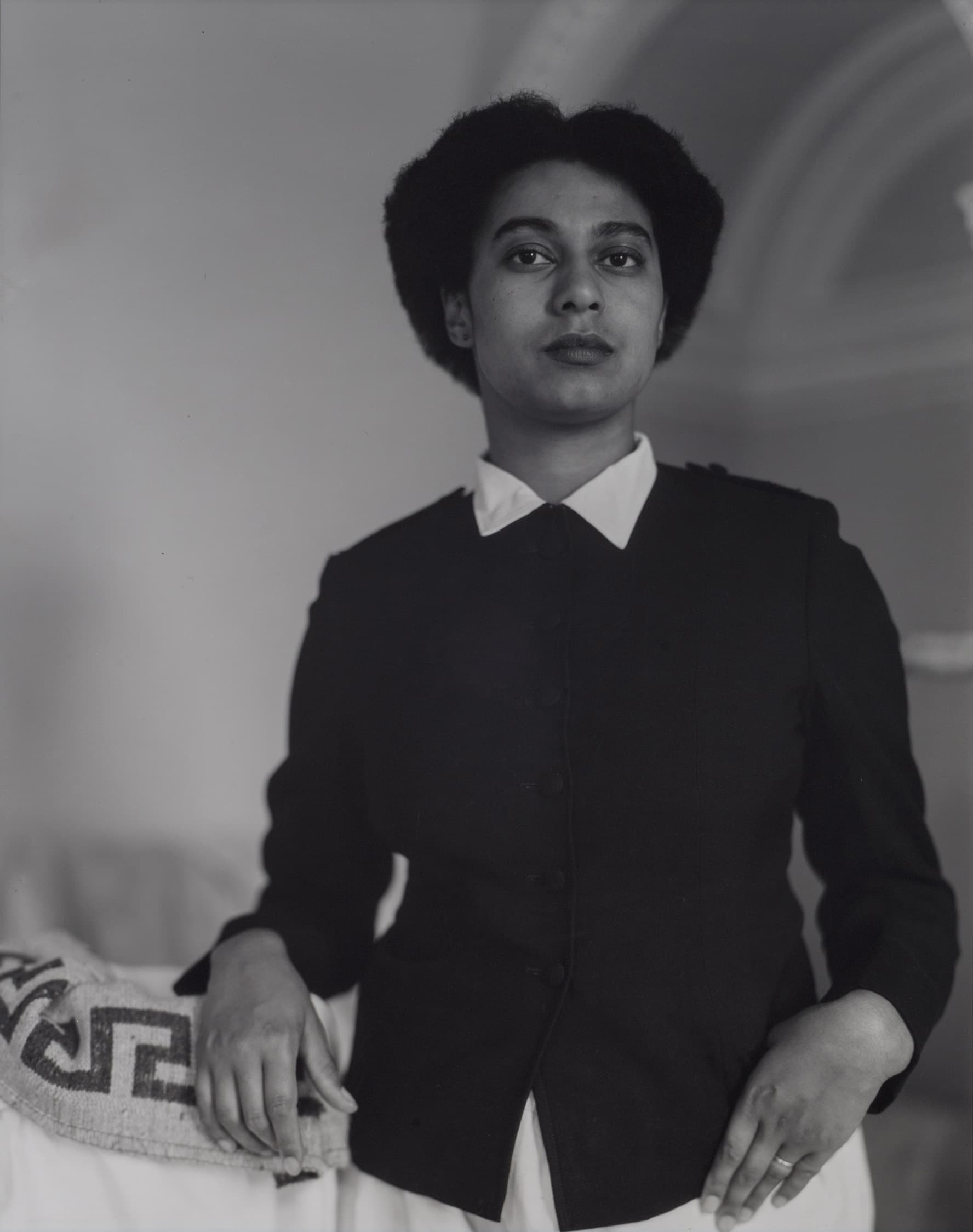
Les Bijoux IX, 2002 © Maud Sulter, courtesy the Estate of Maud Sulter
The exhibition Passion, which runs until 4 June, and the accompanying book, present the a major retrospective of Sulter’s work, and is the first time a survey of her work has been shown outside Scotland.
Maud Sulter was an artist, writer and curator of Ghanaian and Scottish heritage. She started her professional life as a writer and poet, for which she won a residential fellowship at the Arvon Foundation. She produced her first collection of poetry in 1985 after her poem As A Blackwoman won the Vera Bell prize in the Black Young Writers Award.
In the same year she started producing artwork when she was asked to contribute to The Thin Black Line exhibition, which showcased the work of black women artists. For the exhibition she created three collages that used mixed media, including parts of her own poem that dealt with violence and racism, scraps of images, newspaper cuttings and other material. The series aimed to address the racism of Britain in the 1970s and ’80s.
Sulter initially focused her artwork on photomontage and collage, but later moved into the practice of fine-art photography, preferring to work on a large scale and creating a series of images on a topic.
Her work often challenged ideas about race, sexuality and identity, and is considered to have re-invented the visual imagery of black women.
Focus of Sulter’s work

Terpischore, from the series Zabat, 1989 © Maud Sulter, courtesy Edinburgh City Art Centre
Sulter was interested in the intertwined histories of Africa and Europe, and the idea around disappearance and lost histories, and much of her work reflects these topics.
She said: ‘The whole notion of the disappeared, I think, is something that runs through my work. I’m interested in absence and presence in the way that particularly black women’s experience and black women’s contribution to culture is so often erased and marginalised. So that it’s important for me as an individual, and obviously as a black woman artist, to put black women back in the centre of the frame – both literally within the photographic image, but also within the cultural institutions where our work operates.’ (From Maud Sulter: Passion)
Major works

Duval, from the series Syrcas, 1993 © Maud Sulter, courtesy the Estate of Maud Sulter
Some of her most well-known works include the series Zabat (1989), a number of large-scale colour portraits depicting contemporary black women in the guise of the ancient Muses. Sulter’s powerful image of Terpsichore, the Muse of dance and lyric poetry, overturns the conventions of 18th century portraiture, presenting a black woman wearing the elaborate white wig associated with the slave-owning class.
Her series Hysteria (1991) was partly inspired by 19th century African American sculptor Edmonia Lewis, and tells the story of a black woman artist who came to Europe seeking fame and fortune, but disappeared without trace.
In Les Bijoux (2002), Sulter plays a character inspired by 19th century Frenchwoman Jeanne Duval, the so-called ‘Black Venus’ who inspired Baudelaire’s poetry. In this series of bold self-portraits, the viewer is confronted by multiple images of Sulter dressed in elegant gowns, with jewels gleaming at her throat.
Sulter’s photomontage Twa Blak Wimmin (1997) was inspired by historical accounts of ‘Blak Margaret’ and ‘Blak Elene’, who were feted at the court of King James IV of Scotland in the early 16th century.
Syrcas (1993), a major work that was chosen to represent Britain at the first Johannesburg Biennale, combines vintage postcards of Alpine landscapes, illustrations from publications on African art, and images of European art and photography. Ostensibly pages from a scrapbook made by ‘Helga’, a fictitious girl of Cameroonian descent whose parents are killed in the Third Reich, Syrcas links the horrors of African slavery with the European persecution of minorities in the 1930s and 1940s.
Other creative work
Sulter was prolific in many other creative areas apart from photography. She was also an award-winning poet, cultural historian and publisher of her own imprint, Urban Fox Press. She also curated 20 exhibitions and founded a gallery.
Exhibition

Hysteria, 1991 © Maud Sulter, courtesy the Estate of Maud Sulter
The exhibition Passion, running until 4 June, and the accompanying book, present a major retrospective of Sulter’s work. It is the first time a survey of her work has been shown outside Scotland.
Co-curator Deborah Cherry says: ‘Maud Sulter was an important artist who put race, sexuality and identity at the heart of debates about art and aesthetics. She gave a voice and image to black women in history and fiction who have been forgotten or erased.’ Co-curator Malcolm Dickson says: ‘The exhibition redresses cultural neglect and contributes to a significant reappraisal that puts Sulter back in the frame of art history, as well as on the cutting edge of contemporary practice.’
The exhibition Passion: Maud Sulter runs until 4 June 2016 at the Impressions Gallery, Centenary Square, Bradford BD1 1SD. Admission: free. For more information, visit www.impressions-gallery.com.







